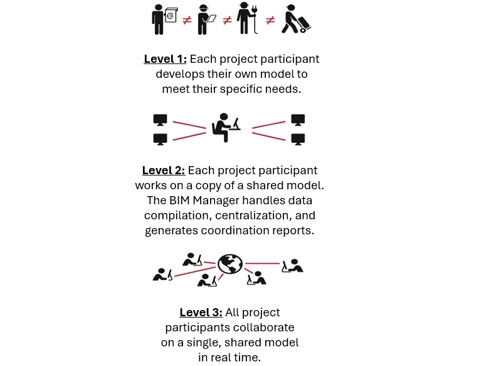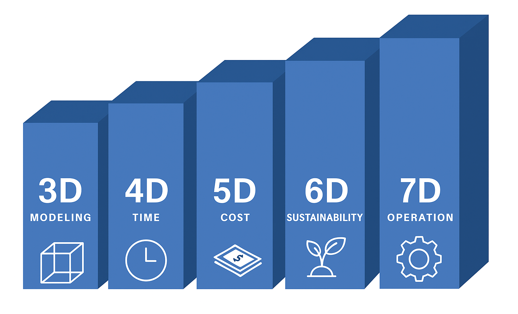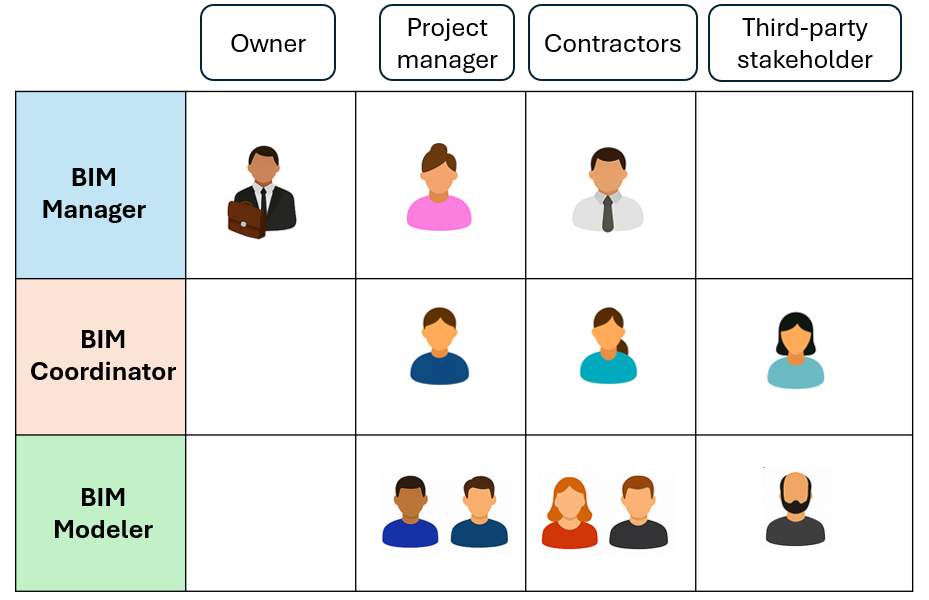Organizational Framework of BIM

BIM evolves through levels, reflecting the degree of collaboration and data exchange among project stakeholders.

BIM is not limited to 3D: it integrates additional dimensions for a more comprehensive understanding and management of the project.

Various BIM documents guide the project. They help ensure model quality and optimize collaboration among all stakeholders.

Effective implementation of BIM relies on a structured and collaborative team: from the BIM Manager to the BIM Modeler, each role is essential in the process.